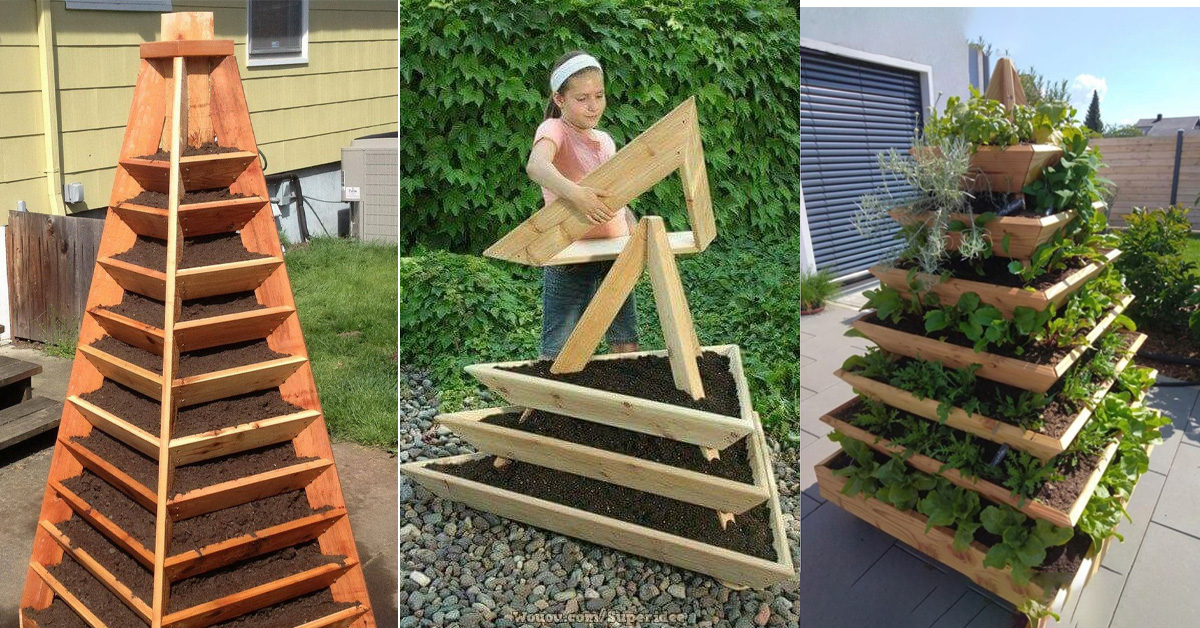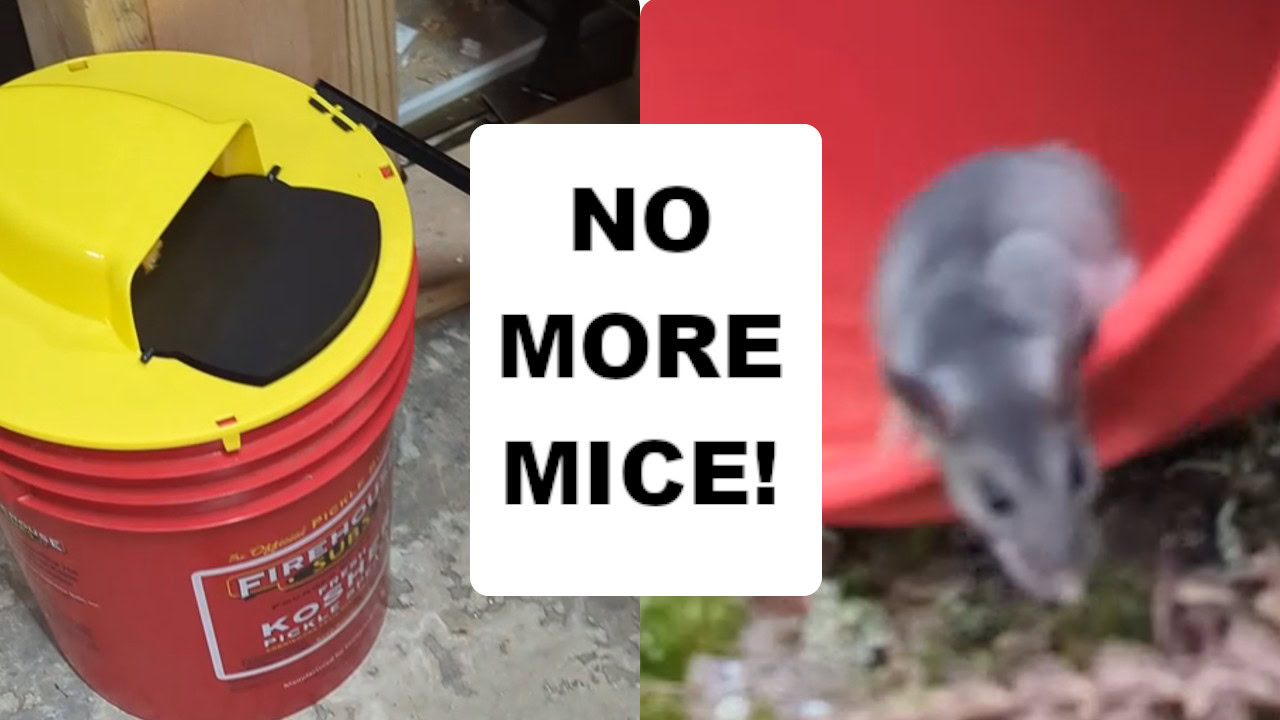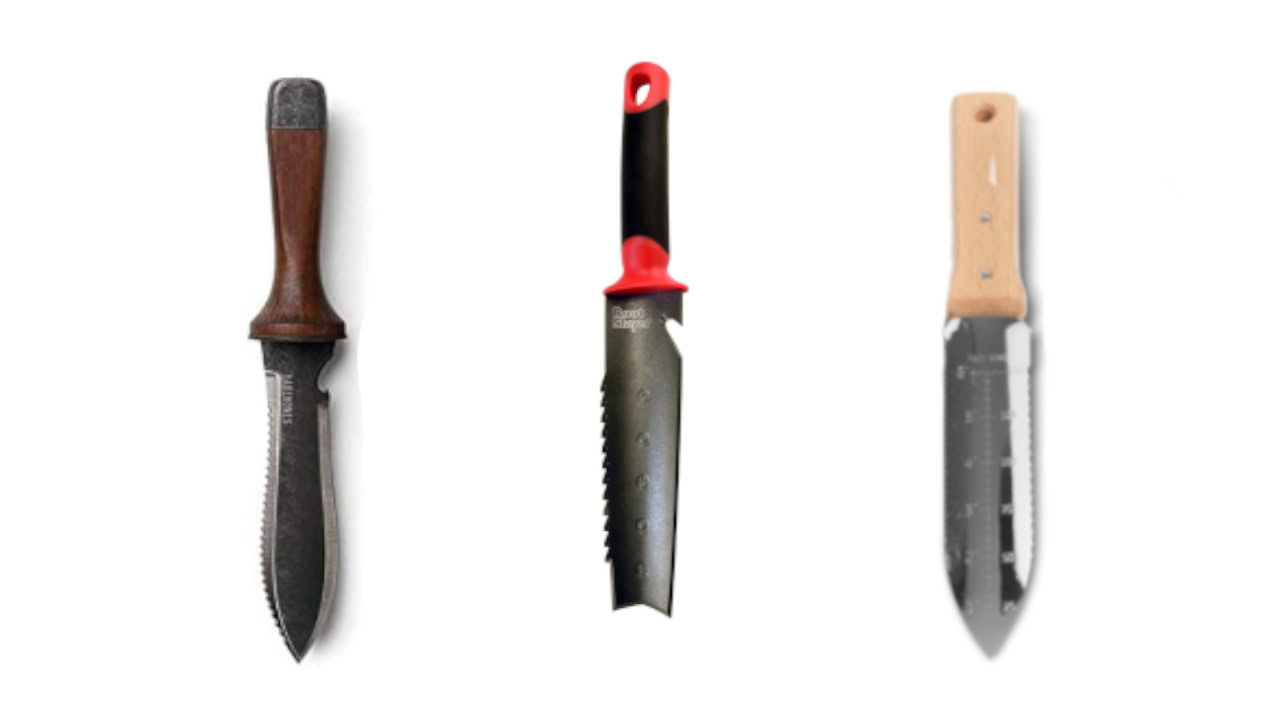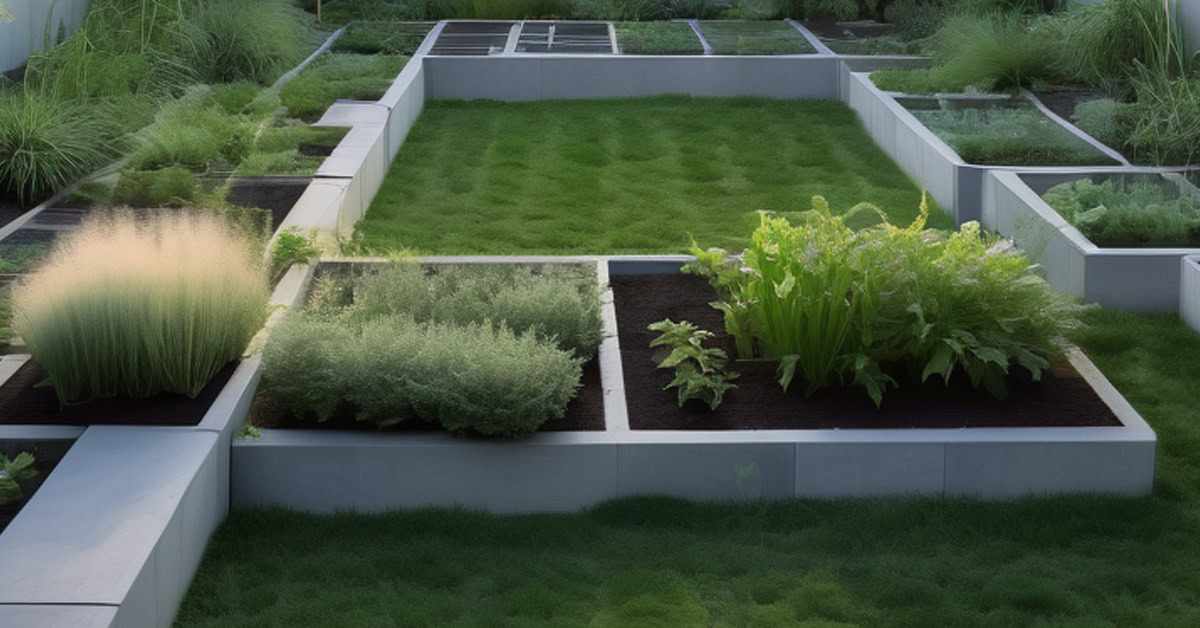More strawberries in a smaller space, with less effort is what strawberry pyramids are all about. These clever strawberry planters, maximize your garden’s growing space, while making it easier to get an abundant harvest of delicious strawberries.
In this post, I’ll talk about the advantages of strawberry towers, sharing best practices for growing succulent strawberries, tips on proper watering, and creative ideas on how to build your very own tower of strawberry delights. Whether you’re a seasoned gardener or a novice with a green thumb, strawberry pyramids offer up some big gardening opportunities.
Why Build Strawberry Pyramid Planters
Strawberry pyramids are not only a decorative item in your garden, but let you grow more strawberries in a smaller space, while reducing the amount of work you have to do, and saves you having to get down on your knees. Additionally, there are other benefits such as being easier to keep pest free that make strawberry pyramids a great addition to your garden. We will explore these and more below.
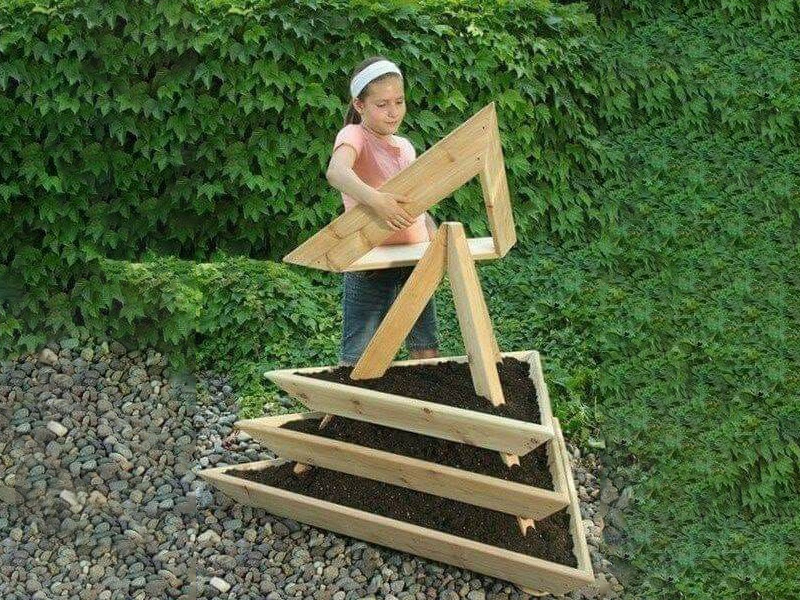
Strawberry Pyramids Maximize Space
In small yards and urban spaces, you have to squeeze as much growing area in as possible. Strawberry pyramids make the most of a small space by going up, they gain access to higher densities of plantings in a smaller footprint.
Effortless Access: Harvest with Ease
Whether you are lazy like me, or have bad knees and don’t want to get down on the ground to harvest your strawberries, strawberry towers and pyramids are the ideal solution. The raised beds make it easier to tend to and pick your strawberries.
Pest-Free Strawberries: Elevated Security
In my experience, strawberries have to main garden pests to worry about, slugs and birds. If you wrap the base of your strawberry pyramid with copper tape, it will dissuade slugs from going after your strawberries, and getting them up off the ground makes them easier to patrol for offenders that sneak in.
As for birds, the shape of strawberry pyramids makes it easy to drape bird netting over, protecting them from getting raided before you can enjoy them!
Choosing the Right Wood for Your Strawberry Pyramid Planter
When it come to building a strawberry pyramid that will last and that looks good, you really have three wood choices, and plastic to decide between.
Cedar Strawberry Pyramids
Cedar is a go-to favorite building material for gardeners due to its lightweight and rot resistance. The oils in cedar that give it its signature smell also help preserve the wood against rot and insects. The only thing to consider is that some people are allergic to it, so take care when sawing or sanding it.
Redwood For Strawberry Pyramids
Another excellent wood for making planters like strawberry pyramids is redwood. A soft wood like cedar, redwood gets its rot and insect resistance from the high levels of tannins in its wood. Unfortunately, much like cedar, it will quickly lose its signature color when left exposed to the elements.
Think Twice About Pressure Treated Wood
While pressure treated wood is readily available and generally a cheaper option than cedar or redwood, you will probably want to avoid using it for planters. The reason for this is that to make the wood bug and rot resistant, they have to inject it with a cocktail of toxic chemicals. Over time, those chemicals can leach out into the soil around them, into your strawberry plants, and ultimately into you.
Using Plastic For Your Strawberry Pyramid
To be realistic, using a plastic edging to make a stack of discs, each smaller than the other one below it, isn’t truly making a strawberry pyramid, but it does achieve the same effect. If you want a circular design for aesthetic reasons, this may be a good choice for you, though while I haven’t tried building one this way, I suspect that they are more prone to settling weird than other types of strawberry pyramids.
Watering Your Strawberry Pyramid
While you are in the planning stages of your strawberry pyramid, it is a good idea to give some thought to watering it. The easiest way to water your new strawberry planter is to use soaker hoses or drip irrigation.
If you want to go with this style of watering, it is easiest to plan and install it before you fill your strawberry pyramid with soil. That way you can run your main lines up the center of your tower, and then run lateral lines out to each of your levels.
The Perfect Soil For Your Strawberry Pyramid
Once you have built a strawberry pyramid, the big question is what soil to fill it with. Regular old dirt is not a good choice as it will pack tight, not drain well, and not give you very good results. Strawberries like deep, sandy loam soil rich in organic matter that drains easily.
Here is a basic recipe for material to fill your strawberry pyramid:
- Garden Soil or Topsoil (40%): This forms the base of your mix and provides essential minerals and nutrients. Make sure it’s well-draining and free of pests or diseases.
- Compost (30%): Compost adds organic matter, improves soil structure, and provides a wide range of nutrients. It also enhances water retention and drainage.
- Perlite or Vermiculite (20%): These lightweight, mineral-based additives improve aeration and drainage, preventing soil compaction.
- Peat Moss (10%): Peat moss helps retain moisture while also improving soil structure. It’s an excellent addition for water retention in strawberry planters.
You will want to check the pH of your soil before filling your new planter as strawberries like a slightly acidic soil of 5.5 to 6.5. If your soil is outside of this, you will need to adjust it with lime or sulfur.
Fertilizing Your Strawberry Pyramid
Plants need food too, so you should fertilize your pyramid with an organic, slow release 10-10-10 fertilizer when you first set it up, then again when you put it to bed in the fall and when you prep it in the spring.
A steady flow of nutrients will help ensure a big bountiful strawberry harvest.
Examples Of Strawberry Pyramids
Here are some examples of the many styles and forms of strawberry pyramids that people have built. When it comes down to design, it really is a matter of how complex you want to make it and how good your woodworking skills are. Simple stacks of boxes are extremely easy, while pyramids of double bevel cut cedar take a little more time and skill.
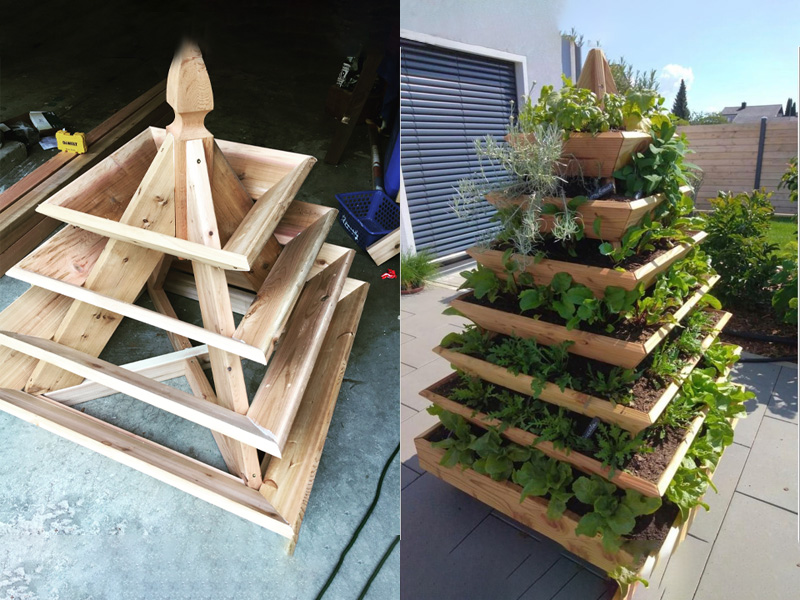
Photo Credit: Perrenial Genes and Shellie Gainerhttps://www.pinterest.com/shelliegainer/

Photo Credit: Unknown
This is what I’d call a medium difficulty strawberry pyramid. There are some double bevels to cut, but not as many as some of the more complex plans. Once you have your compound miter saw set (Amazon link), this would be relatively quick to build.
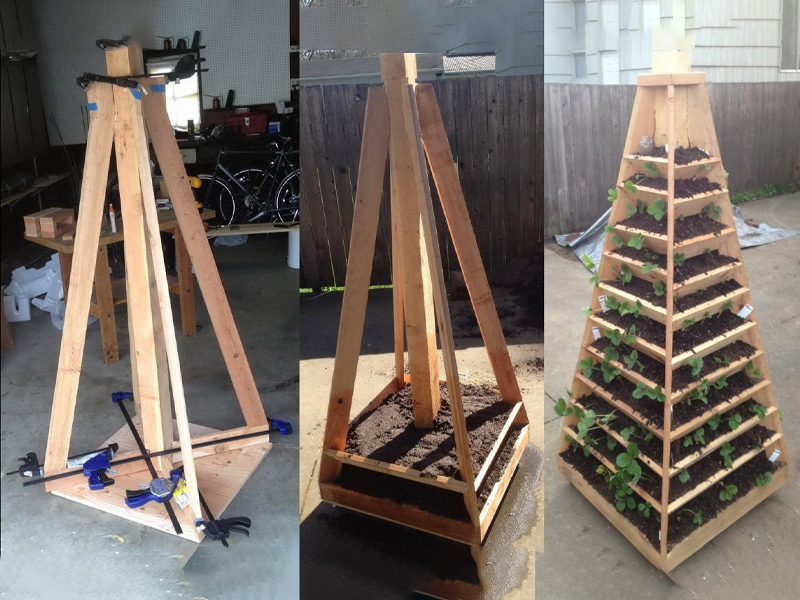
Photo Credit: Remove and Replace
Speaking of more complicated, this tall strawberry pyramid really crams a lot of growing area in to a small space. Definitely is a lot more cutting and woodworking though than some of the other styles of strawberry planters.

Photo Credit: Remove and Replace
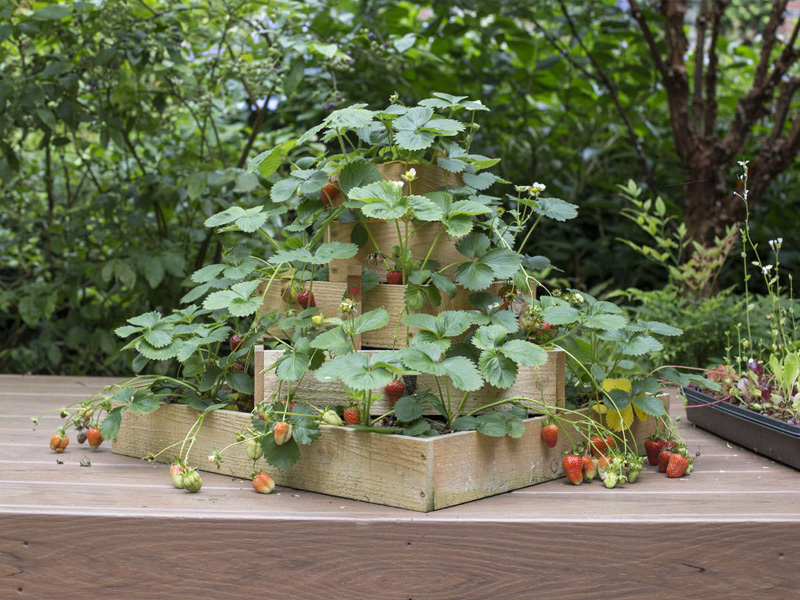
Photo Credit: Dunn Lumber
A table top strawberry pyramid? Why not? You could also take this general design and scale it up to about as large as you want.
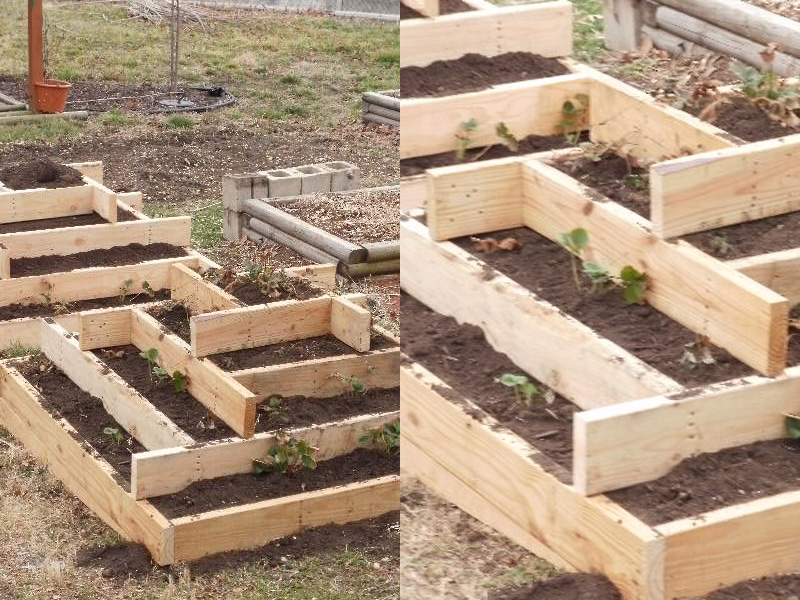
If you want a simple strawberry pyramid, just do a quick build like this one. Made from 2×6 lumber and just butt joined together with screws, I’m betting you could have this up in about an hour.
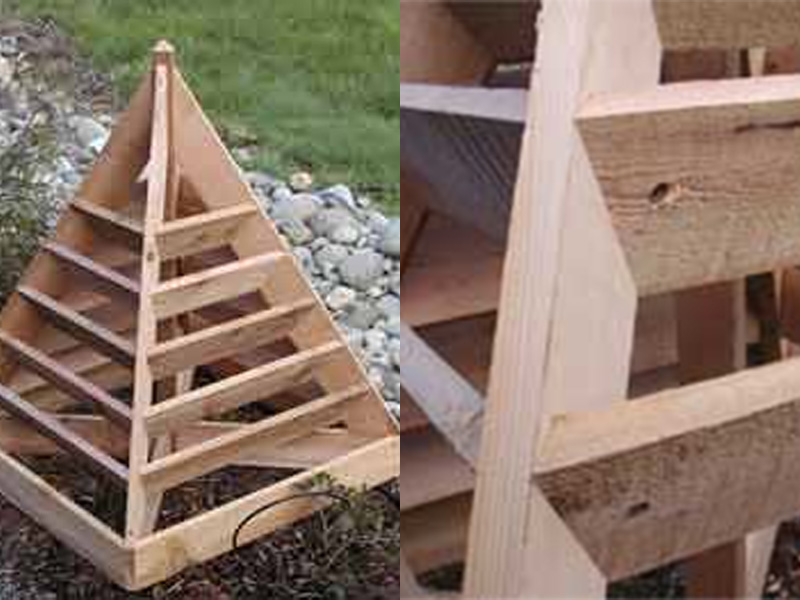
Photo Credit: RunnerDuck
Another relatively easy to build strawberry pyramid, this one uses primarily 1″ x 4″ cedar fence boards for its construction. This seems like a fun weekend project for the winter when it is too nasty to be outside working in the garden. Only change I would make would to use a pocket screw jig (Amazon Link) instead of trying to drill all those screw holes by hand.
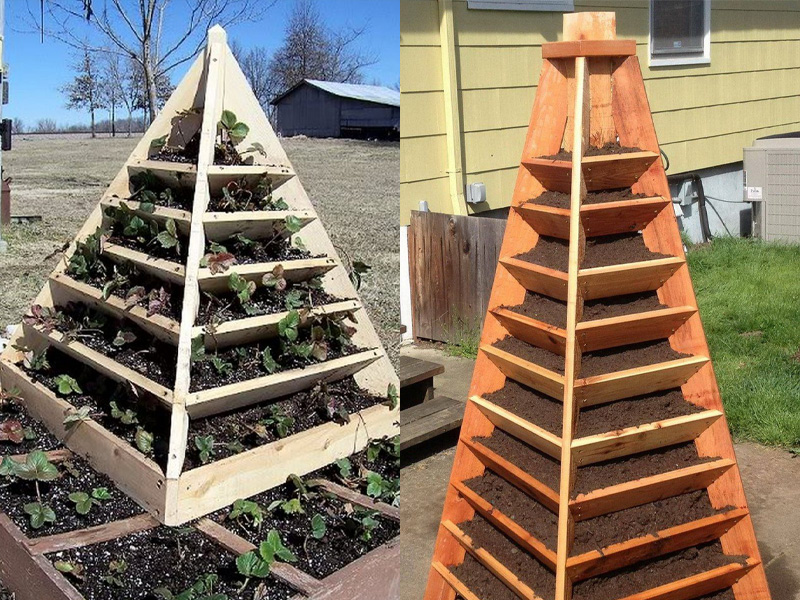
Photo Credit: Owner Builder Network

